
Towable RVs: Comparing Travel Trailers, Fifth Wheels & Toy Haulers
Whether you are brand new to RVing or a long-time motorhome owner looking into towables for the first time, the different products and logistics involved may feel overwhelming. However, these are a great option for travelers of all kinds, often less expensive than motorized RVs, and much simpler to use than you may think.
To offer some help, we'll compare the types of towable products and give a rundown of a few important towable terms to know. We hope this article helps you feel like you've gained a basic understanding and the confidence you need to get towing.
What is the Difference Between a Travel Trailer, Fifth Wheel and Toy Hauler?
A towable is simply an RV that you tow with a truck or other vehicle capable of towing. However, there are multiple different types of towables, and each of those also comes in various sizes with multiple options to choose from.
While price, comfort and size will all be huge factors, how much your vehicle can tow is probably the most important. If you already have a vehicle you plan to use for towing, this will limit your search. For this reason, many people suggest deciding on your towable RV first, then choosing a vehicle that has a high enough tow capacity to safely pull it once all of your belongings are loaded.
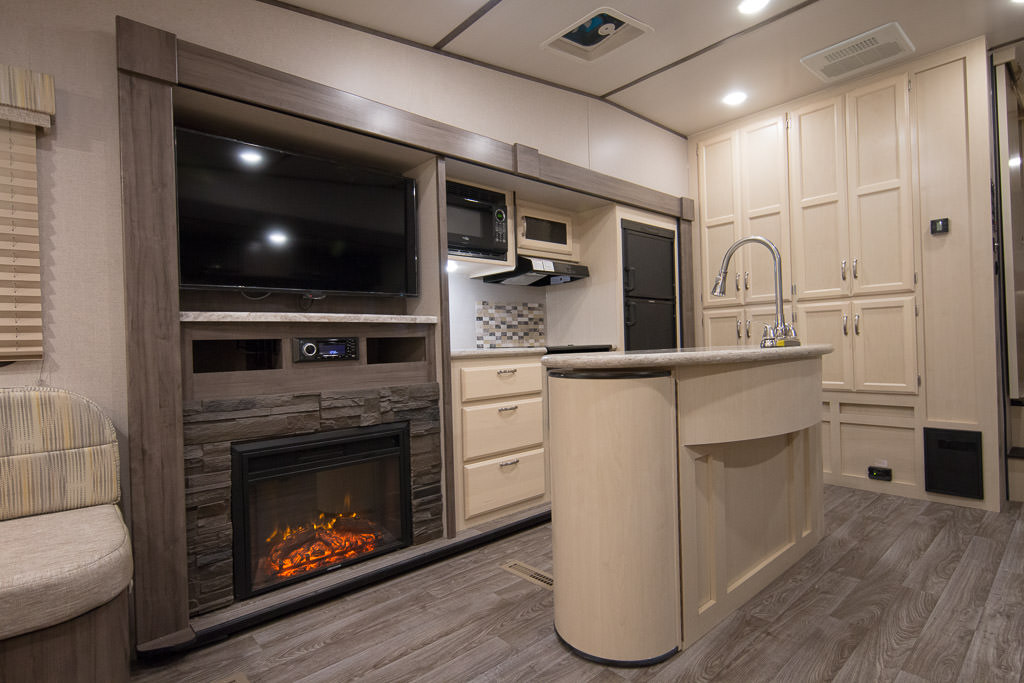 Interior of the Winnebago Minnie Plus Fifth Wheel 27RLTS.
Interior of the Winnebago Minnie Plus Fifth Wheel 27RLTS.
Travel Trailer
Travel trailers are pulled by connecting them to a bumper level hitch. While many people use pick-up trucks, trailers can be pulled by a variety of vehicles as long as the trailer does not exceed the tow vehicle's capacity for towing. (Read why one of our GoLife contributors chose to tow their trailer with a van).
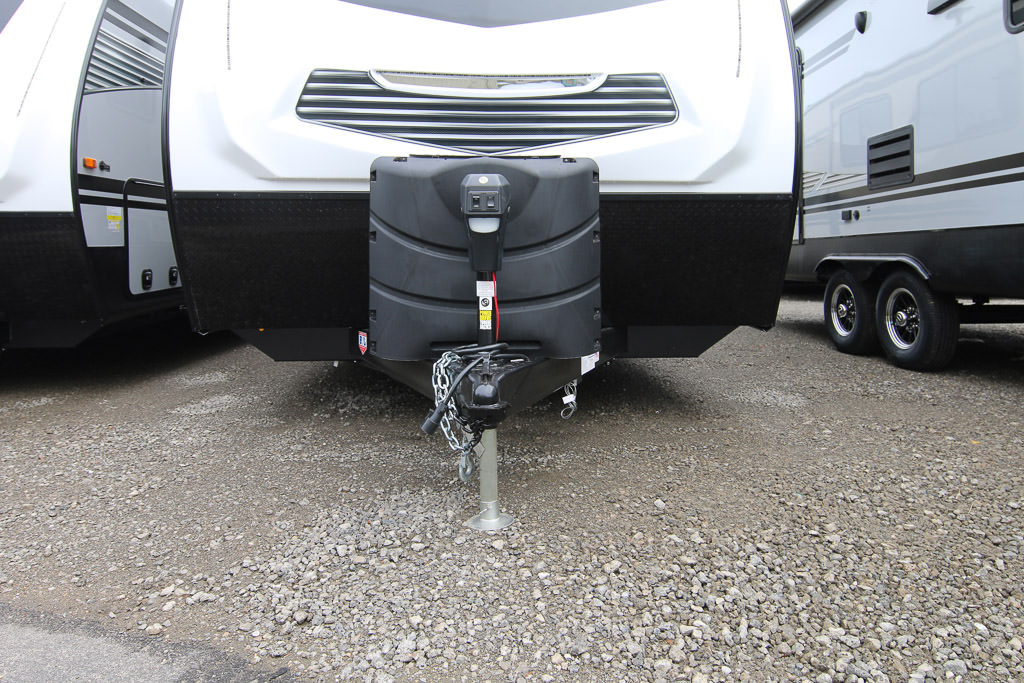 Travel trailer hitch.
Travel trailer hitch.
Travel trailers are usually less expensive than other towable products, making them a great first RV for those wanting to try out the lifestyle. While budget-friendly, they often still have slide outs, storage space, and other features to make them a comfortable home away from home. For example, Winnebago travel trailers range from about 19 to 36 feet long and start at around $22,000 for the smallest and $38,000 for the largest.
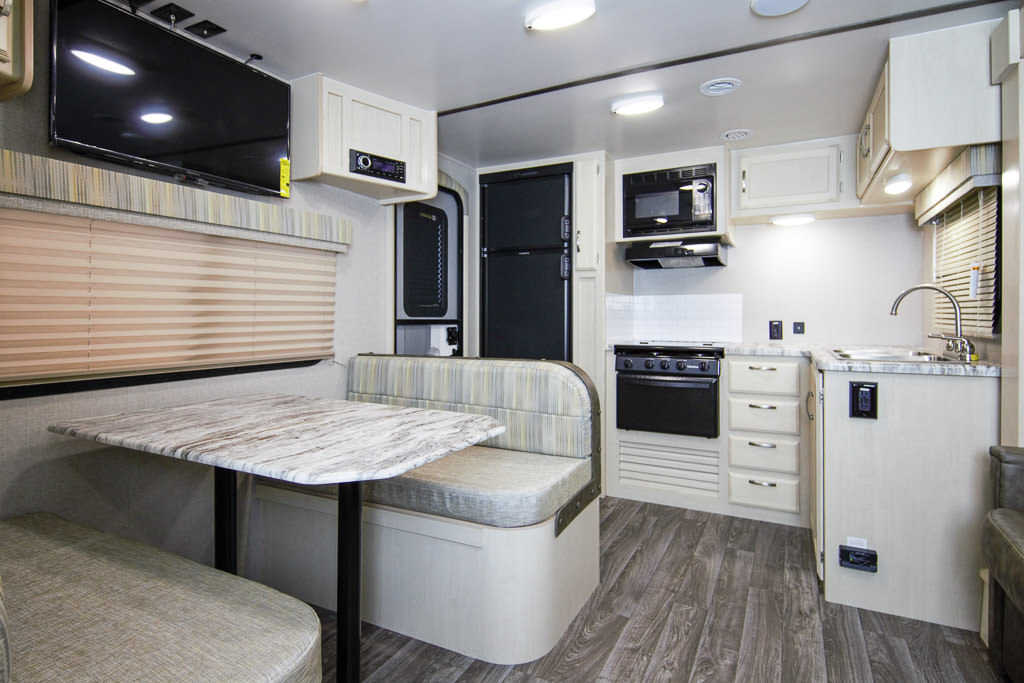 Interior of the Winnebago Minnie 2401RG Travel Trailer.
Interior of the Winnebago Minnie 2401RG Travel Trailer.
Fifth Wheel
The main difference between a fifth wheel and a travel trailer is how it connects to the vehicle towing it. Instead of connecting via a bumper-level hitch, fifth wheels connect to a hitch inside the bed of a truck. While this limits the type of vehicle that can tow a fifth wheel, this type of connection does provide better maneuverability as well as some additional space.
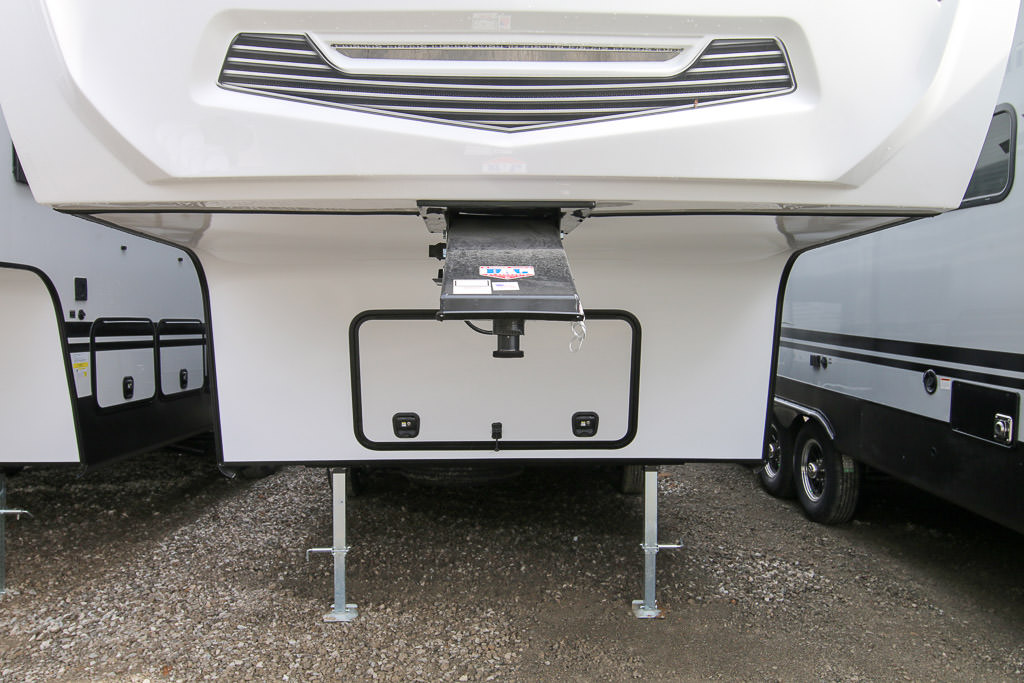 Fifth wheel hitch.
Fifth wheel hitch.
Fifth wheels are a common option for full-time RVers with families because they are spacious, often have more storage space, and are easier to tow -- which is helpful when driving often. Another reason families tend to choose towables is because many parents prefer to have children in front-facing seats in a truck or other vehicle, instead of using the seats in motorhomes that aren't ideal for car seats and are often side-facing. (Note: Human and animal passengers should not remain in a towable RV while it is moving).
Winnebago fifth wheels range from about 27 to 33 feet long and start at around $35,000.
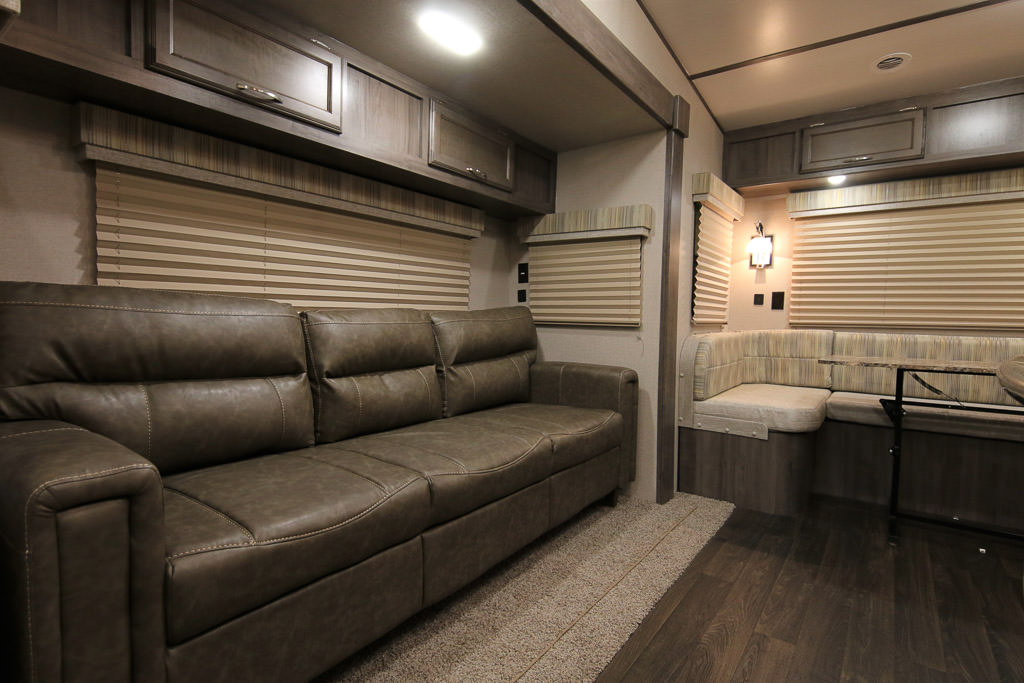 Interior of the Winnebago Minnie Plus Fifth Wheel 27RLTS.
Interior of the Winnebago Minnie Plus Fifth Wheel 27RLTS.
Toy Hauler
A toy hauler is a travel trailer or fifth wheel with a ramp opening in the back. It is basically a towable with a small garage. This allows owners to bring small vehicles, motorcycles, or other 'toys' with them.
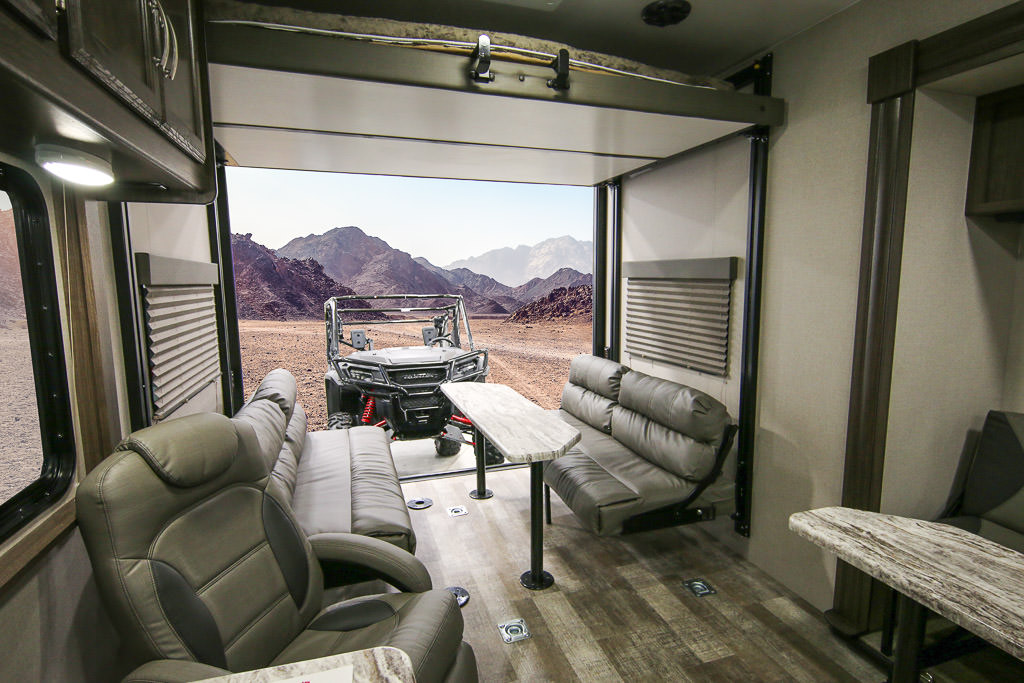 Garage of the Winnebago Spyder 28KS Toy Hauler.
Garage of the Winnebago Spyder 28KS Toy Hauler.
These are great for travelers who like to have a small tow vehicle for running errands or exploring. Often, an off-road vehicle is another top choice for adventurous campers, while RV resort enthusiasts may opt for a golf cart. Winnebago's toy haulers are about 30 to 38 feet long and start at under $50,000.
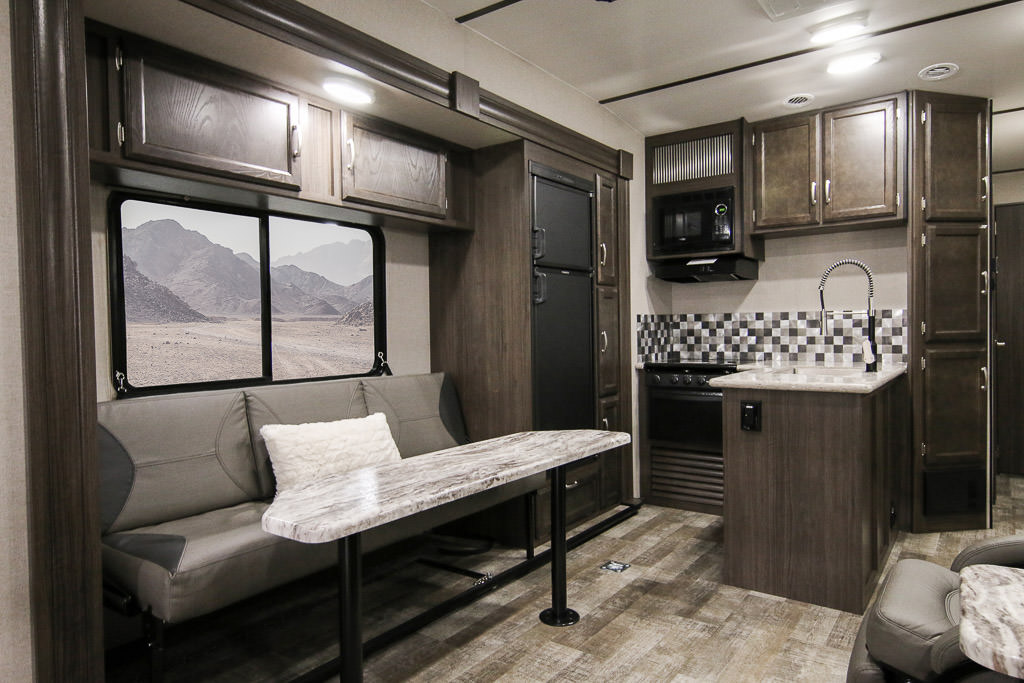 Galley of the Winnebago Spyder 28KS Toy Hauler.
Galley of the Winnebago Spyder 28KS Toy Hauler.
Helpful Towable Terms to Know
As you may have already realized, getting into RVing also means learning a whole new vocabulary of camping and RVing terms. While many of these will be used for all types of RVs, some are specific to towables. Not surprisingly, many of these probably have to do with weight -- either in reference to the RV or vehicle you will be pulling it with.
Here are a few important ones to understand before hitting the showroom floor to look at towables:
- Gross Vehicle Weight Rating (GVWR): The maximum permissible weight of the vehicle or trailer when fully loaded for travel. This includes the unloaded vehicle weight, all fluids, cargo, optional equipment and accessories.
- Cargo Carrying Capacity (CCC): The permissible weight that a towable RV can carry. This is calculated by taking the vehicle GVWR and subtracting the Dry Weight.
- Dry Weight: The weight of the trailer as built at the factory. Does not include cargo, fresh water, etc.
- Dry Hitch Weight: The amount of the trailer's unloaded weight that falls on the ball of the trailer hitch.
- Towing Capacity: The maximum permissible weight that a vehicle can tow.
We hope this helps clear up some of your questions. For more information on Winnebago's towable offerings and a look at the various floorplan options, check out Winnebago.com.
Happy towing!
Comments
Comments on this post are moderated, so they will not appear instantly. All relevant questions and helpful notes are welcome! If you have a service inquiry or question related to your RV, please reach out to the customer care team directly using the phone numbers or contact form on this page .